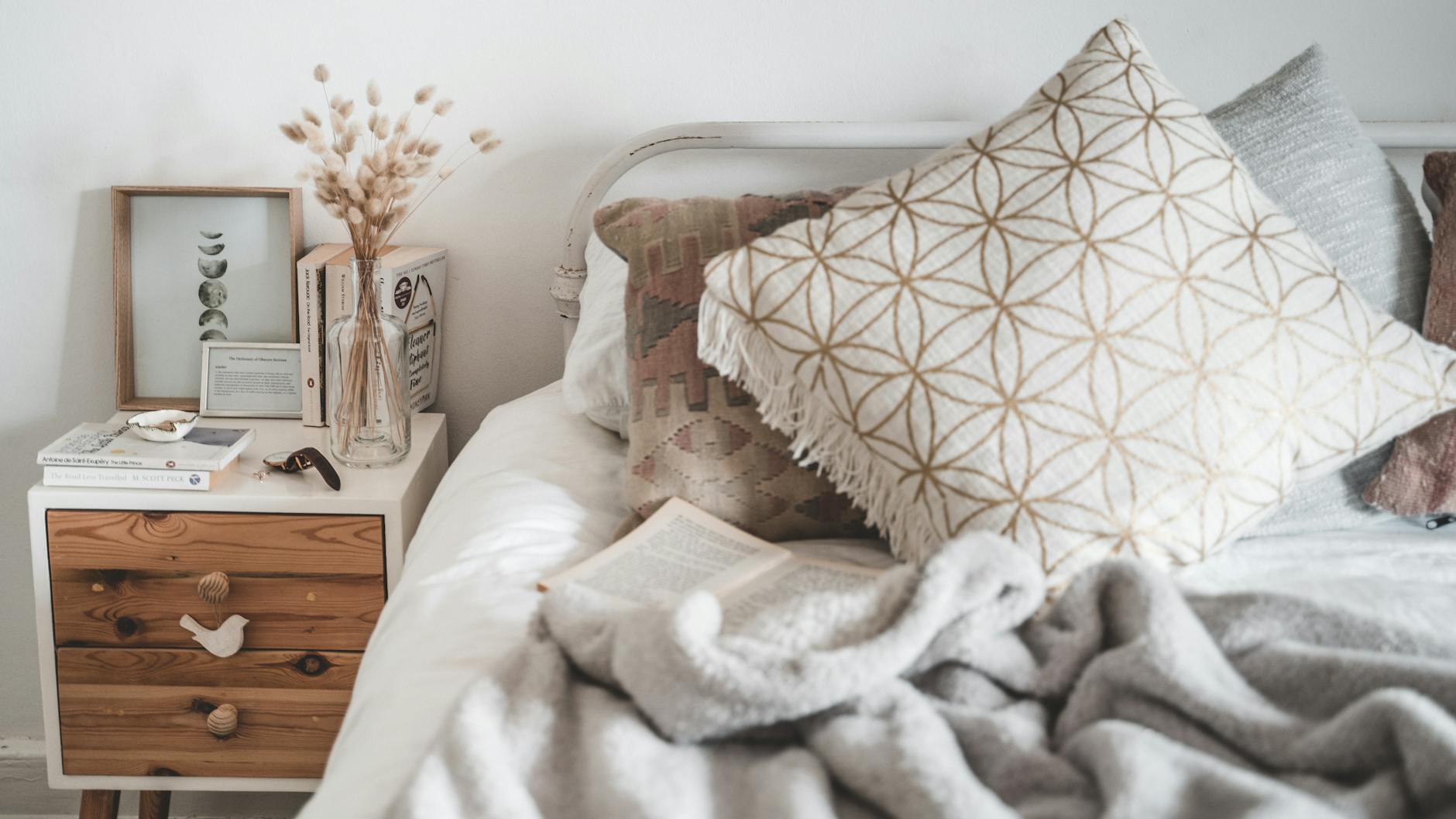
When we start to have problems with sleeping through the night, at first we think that the cause hides within us. Staying up late or stressing out both can be the source of sleep deprivation, yet there’s one more reason lying beneath the surface ‒ and it’s your bedroom. So what things can make your BEDroom your NIGHTMAREroom? Let’s find out.
Alarming colors
It is quite obvious that the color scheme of the bedroom affects you only shortly before falling asleep and at the moment of waking up. When we are already asleep, it doesn’t matter what color the walls are painted in. However, before and after sleep, this can be critical.
The best shade for a bedroom is the definition of the word “calm” ‒ it’s better to avoid bright and exciting colors, such as red, orange, deep purple.
Neutral and pastel shades soothe and tune in to a sleepy mood. Shades of gray and blue are excellent options.

Room temperature
According to Dr. Christopher Winter, a medical director at Charlottesville Neurology and Sleep Medicine, the perfect bedroom temperature is 60 to 67 degrees Fahrenheit. Temperatures that are too low (below 54 degrees) or too high (above 75 degrees) can disrupt your sleep, causing you to toss and turn during the night.
This can be explained by how our circadian rhythms work ‒ particularly tha change in our core body temperature during the day. The temperature pattern consists of highs and lows. It starts to increase before you awaken, peaking late in the afternoon, and then as bedtime approaches it starts to decrease. In fact, one of the recommendations that doctors give to their patients suffering from insomnia is turning their thermostat down by 2-3 degrees before going to sleep.

Bedding
We spend about eight hours in bed every day. This whole time our body is working hard secreting sweat and renewing cells.
Dust and microbes build up on the bed with our sweat and dead cells, as well as the remnants of your evening skincare routine. Mixed together, this dirty cocktail can become a threat to your health, provoking allergies, so it’s important to change your pillowcases and bed sheets regularly.
It is recommended to change your bedding at least once a week, while pillowcases should be changed even more often ‒ once in every two to three days.
Blinding lights
As it goes in The Weekend’s song, “no, I can't sleep until I feel your touch”. It’s exactly what happens with us every night ‒ the difference is that we don’t go to sleep without checking the phone or prefer to fall asleep to a random TV-show or Netflix original playing in the background.
The good old advice not to touch any piece of technology at least 30 minutes before snuggling up in bed is still relevant. When it gets dark, your body produces melatonin, the vampire hormone, telling you it’s time to sleep. If you don’t turn off artificial lights, melatonin will be suppressed, leading to a misunderstanding between your body and its circadian rhythm and, therefore, making it harder to fall asleep.
Bad soundproofing insulation
As the research suggests, the brain processes all surrounding sounds even when you’re sleeping like a baby. A sudden whistle of the wind from outside at night can make a person move between light and deep sleep stages without them noticing. It will not cause you to wake up, but it can affect how well-rested you feel in the morning.

Check out more articles on sleep health here.







